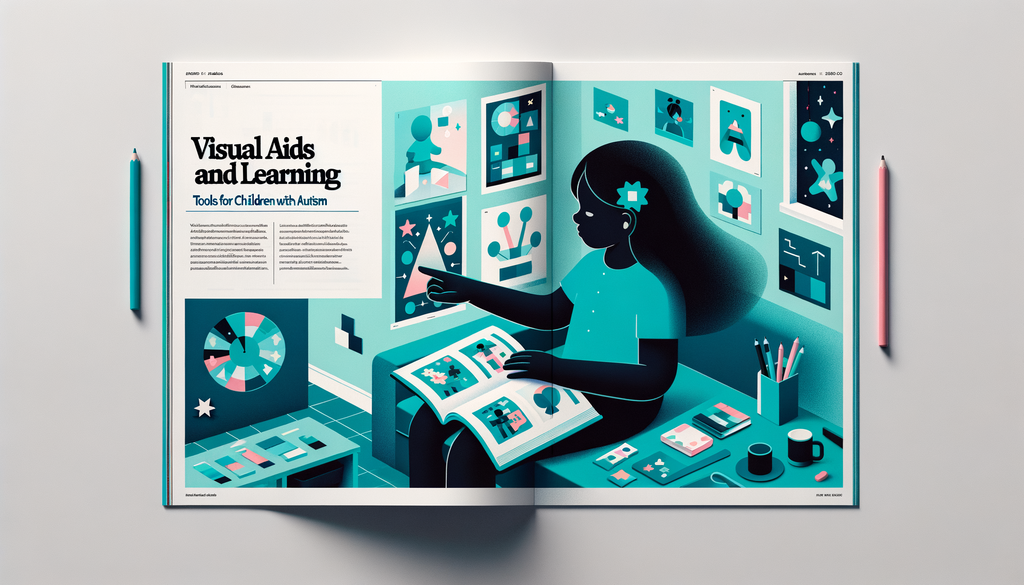Visual Aids and Learning: Tools for Children with Autism

Visual Aids and Learning: Tools for Children with Autism
Visual aids can be powerful tools for helping children with autism to understand, communicate, and interact with the world around them. They offer visible, tangible ways to explain abstract concepts, share information, and express thoughts and feelings. In this post, we’ll explore some of the most beneficial visual learning tools and strategies that can significantly support the development and learning of children living with autism spectrum disorders.
What are Visual Aids?
Visual aids refer to any tools or objects used to convey information visually. They can be in the form of pictures, symbols, charts, graphs, maps, or physical items. For children with autism, these aids can take various forms including Picture Exchange Communication System (PECS), visual schedules, or social stories.
Picture Exchange Communication System (PECS)
PECS is an augmentative and alternative communication (AAC) system that involves the use of pictures to teach communication skills. PECS promotes independence by allowing the child to initiate communication and express their needs, feelings, and desires visually. This system can be tailored to the unique needs and abilities of each child, using images that are easily recognizable to them.
Visual Schedules
Visual schedules provide a concrete, sequential breakdown of activities, reducing anxiety and promoting non-dependent task completion. They can be personalized with images representing the child’s daily routine and transitions. Visual schedules can also encourage the development of time management skills.
Social Stories
Originated by Carol Gray, social stories are short, simple explanations of social situations or concepts, written in a friendly manner from the child’s perspective. They use images and symbols to complement the text, making the scenarios easier for the child to comprehend and remember.
The Benefits of Visual Aids for Children with Autism
Visual aids cater to the visual learning preference of many children with autism. In contrast to verbal information, visual aids are static and can be processed at the child’s own pace. This can make them particularly beneficial in the following areas:
Improved Understanding and Communication
Visual tools provide a clear, concrete representation of people, events, rules, or concepts, which can be particularly helpful for children who may struggle with abstract or theoretical thinking. Tools like the PECS can enhance expressive communication, while visual schedules can help make routines and transitions more predictable and understandable.
Reduction in Anxiety and Problem Behaviors
By making day-to-day activities and expectations easier to understand, visual aids can lead to a reduction in anxiety and related behaviors. They can be used to indicate change, sequence events, and teach coping strategies, therefore providing a source of consistency and control for the child.
Development of Social Skills
Tools such as social stories can clearly illustrate social cues, expected behaviors, and consequences in different social situations. By breaking down complex social rules into understandable and relatable visual guidelines, they can help children with autism navigate social situations more effectively.
How to Successful Implement Visual Aids at Home and School
Implementing visual aids requires a consistent, structured approach. Consider these key strategies:
- Involve the Child: Whenever possible, involve the child in creating the visual aids in order to increase their personal connection and understanding.
- Stay Consistent: Use similar visuals in multiple environments (like home and school) and ensure they are accessible at all times.
- Train Others: Teach family members, teachers, and therapists how to use the visual aids to ensure consistency.
- Modify as Needed: Regularly update visual aids to reflect changes in routine, progress, or new learning goals.
By incorporating visual aids into your child’s learning strategy, you can provide them with vital tools to understand and communicate with the world around them. To learn about other strategies that might benefit your child, check out some of our previous articles on how to Manage Meltdowns and Behavioral Challenges, How to Navigate the IEP Process, or Build Social Skills for Autistic Children. These resources can provide insights and practical tips to further support your child’s unique learning journey.
(Sources: TEACCH, Autism Society, National Autism Center)